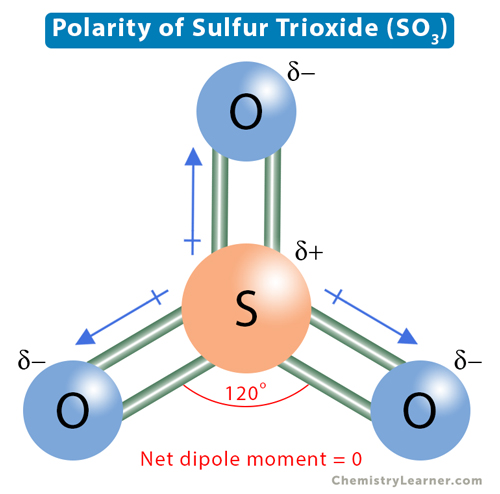Polarity of Sulfur Trioxide (SO3)
Sulfur trioxide (SO3) consists of a central sulfur (S) atom surrounded by three oxygen (O) atoms. Sulfur and oxygen have six valence electrons each. Sulfur forms double covalent bonds with each oxygen atom. As a result, the SO3 structure is trigonal planar, with a bond angle of 120°. No lone pairs on the central sulfur atom make the molecule symmetric.
The electronegativities of sulfur and oxygen are 2.58 and 3.44, respectively. Sulfur is the least electronegative, which explains why it is at the molecule’s center. Oxygen is the more electronegative atom, and it will attract the shared electron pairs toward itself. It will acquire a partial negative charge, and sulfur will acquire a partial positive charge. Therefore, the two atoms’ electronegativity difference makes the S-O bond polar. Each S-O bond will have a dipole moment directed from sulfur to oxygen. However, due to the symmetry of the trigonal planar structure, these dipole moments will cancel, and the net dipole moment will be zero. Therefore, sulfur trioxide is nonpolar.
